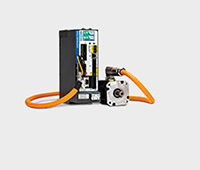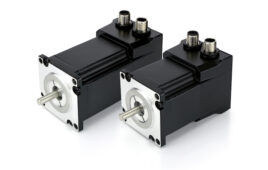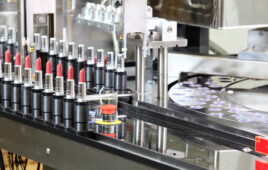A film that prevents car windows from steaming up in winter. A screen that reacts to commands at the touch of a finger. Products manufactured by Germany-based PolyIC might be found in any of these applications; the company specializes in printed electronics. Its transparent, conductive film called PolyTC is in many displays and other applications.
Using a roll-to-roll process, the company prints electronics with ultra-thin metal coatings. The printing material, or substrate, is a transparent polyester film. Several different materials, or “ink,” are deposited on the substrate in a dissolved state. These inks include semi-conductive, conductive and insulating plastics as well as various metal compounds. Continuous roll-to-roll processes like these are inexpensive and apply the required structure directly, during the manufacturing process.
 Modern printing processes deposit extremely thin metal coatings at a resolution of just 10 µm—one quarter the width of a human hair. Standard printing processes have resolutions in a range of more than 100 µm. In electronics however, printing resolutions of under 20 µm are being sought because the resolution in the printing process actively influences the electrical performance of the final product. This is how the machine prints optically transparent films that are, at the same time, electrically conductive.
Modern printing processes deposit extremely thin metal coatings at a resolution of just 10 µm—one quarter the width of a human hair. Standard printing processes have resolutions in a range of more than 100 µm. In electronics however, printing resolutions of under 20 µm are being sought because the resolution in the printing process actively influences the electrical performance of the final product. This is how the machine prints optically transparent films that are, at the same time, electrically conductive.
Indium tin oxide (ITO) is frequently used for applications like these. Yet, the technology behind ITO does have drawbacks. ITO coatings are quite brittle and relatively expensive. That’s why the design team at PolyIC had to come up with a flexible and inexpensive alternative. To create PolyTC, designers had to overcome several hurdles, especially in manufacturing and processing technology.
The tensile stress on the substrate roll had a significant influence on the precision of the manufacturing process. A specific pattern in transportation behavior emerged, depending on the substrate’s thickness and material. To achieve a high-precision, stable web, PolyIC installed Rexroth’s IndraMotion system, combining the Motion Control and PLC in a single control unit.
Integrated functions, like tensile stress and winding controls, helped speed up customization to match individual requirements. Precise registration was vital to ensuring the electric structures really worked. This determined how accurately the individual ink colors were positioned in relationship to each other.
Areas of different sheet tensions were linked to each other by the sheet itself and had to be controlled simultaneously. Necessary and precise controls demand complex decoupling of several cascaded tension control units.
Engineers combined the process control unit with the machine controls to solve this problem. Exact implementation of a complex rule was achieved by real-time integration of process controls and regulating sheet movement with the IndraMotion system solution. Maintaining sheet tension was improved threefold. That improvement represented an immense advance in process stability. The film sheet had to be stopped during production so that high-precision testing equipment could monitor electrical functions.
To this end, IndraMotion combined the rolling movement of the web feed with the linear movement of a sled. The sled in the so-called web accumulator travels at the same speed as the sheet, but in the opposite direction, and effectively stops the web. This means that a part of the web stands still for a moment for electrical testing, without having to bring the entire production line to a halt and without sacrificing productivity.
Bosch Rexroth
www.boschrexroth.com
Filed Under: MOTION CONTROL





Tell Us What You Think!